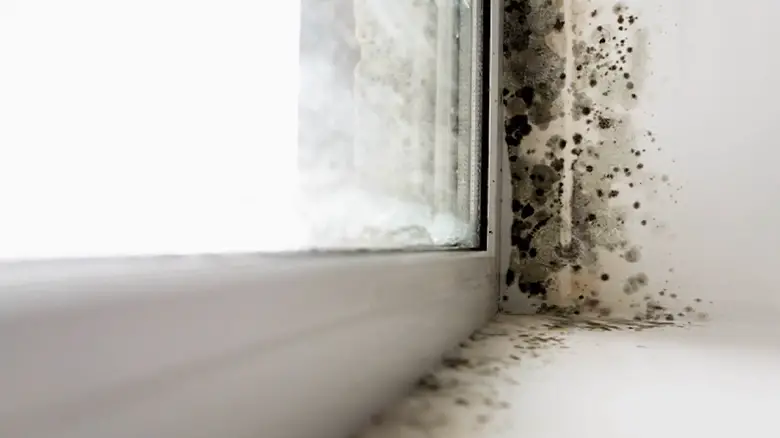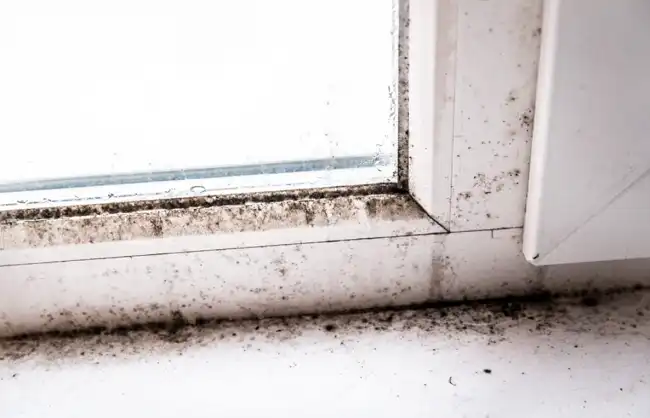RVs provide the opportunity for adventure and freedom on the open road. However, owning an RV also comes with the responsibility of proper maintenance and storage. One of the biggest concerns for RV owners is the prospect of mold growth within their recreational vehicle, especially when storing it for extended periods.
Mold can develop quickly in the warm, humid environment inside an RV and lead to deterioration, unpleasant odors, and health issues. Fortunately, with preventative action and diligent monitoring, RV owners can inhibit mold growth and preserve their investment during months of storage.
You just need to regularly inspect the RV for leaks and moisture intrusion. Repair issues promptly. Clean and dry the interior thoroughly before storage. Use dehumidifiers, desiccants, and ventilation to control humidity. Choose climate-controlled indoor storage or outdoor areas with sunlight and airflow. Monitor with a hygrometer.

4 Effective Ways to Stop Mold Growth
Left unchecked, mold infestation can damage interior surfaces, fabrics, and insulation. Inhaling mold spores and airborne toxins also poses respiratory health risks. Preventing mold growth is critical for preserving RV investment and occupant health. A proactive, multilayered approach is the best defense against mold in an RV. Moisture control, maintenance, storage preparations, and proper storage conditions all help inhibit mold growth.

Source: rvlife
Moisture Control Tactics
The first line of defense is limiting interior moisture sources. Useful moisture reduction strategies include using dehumidifiers to extract moisture from the air and lower indoor humidity below 60 percent. Employing desiccants like moisture-absorbing bags also helps actively absorb excess moisture from the air. Promoting air circulation with fans, vents, and open windows allows moisture to dissipate when possible.
Essential RV Maintenance Practices
Diligent maintenance keeps an RV’s structure and systems optimized against moisture intrusion and mold growth. Important practices include regularly inspecting for leaks, cracks, and potential moisture entry points. Promptly sealing any openings prevents water intrusion. Repairing plumbing leaks, roof damage, and appliance malfunctions that could allow moisture intrusion is also critical. Maintaining roof seals, windows, vents, and weather stripping inhibits water entry into the RV interior.
Storage Preparation Tips
Preparing an RV properly before storage also helps deter mold. Key steps include thoroughly cleaning and drying all surfaces to remove organic matter and moisture that could feed mold growth. Leaving cabinet and closet doors open during storage allows better ventilation and air circulation. Thoughtfully storing fabrics, bedding, and clothing avoid moisture accumulation in storage areas.
Indoor vs. Outdoor Storage: What’s Best?
Both indoor and outdoor storage options have advantages for inhibiting mold, provided certain conditions are met –
Indoor storage offers protection from exterior moisture if the facility environment is properly climate-controlled against humidity. Outdoor storage requires choosing a location with adequate sun, airflow, and drainage, and investing in a high-quality breathable RV cover. Carefully monitoring interior humidity using a hygrometer allows assessment of conditions no matter the storage type.
What to Do if Mold Develops?
Even though the aforementioned ways are superbly effective in preventing mold, by any chance mold infestation does occur, you can go for the below-mentioned steps –
Recognizing and Containing Mold
Recognizing signs like visible mold, musty odors, and condensation indicate mold’s presence. Isolating affected areas prevents the spread of spores and contains damage.
Protective Measures and Mold Removal
Wearing protective gear like gloves, goggles, and masks prevents mold spore exposure when cleaning. Removing or replacing severely affected porous materials like carpets and fabrics limits recurrence. Cleaning affected hard surfaces thoroughly with mold-killing solutions is key. Vinegar, hydrogen peroxide, and bleach can all effectively kill and remove mold.
Thorough Drying and Restoration
Ensuring affected areas are completely dry before making any repairs or replacing materials prevents remolding. Mold can regenerate if moisture remains. Considering professional mold remediation assistance for more extensive infestations use their equipment and expertise to thoroughly eliminate mold and prevent recurrence.
How Mold Grows in RVs?
Mold spores occur naturally in the environment. When these spores land on a damp surface with adequate organic matter, they begin feeding and proliferating. An RV contains many potential food sources for mold, including fabric, carpet, wood cabinetry, and even dust and dirt. With the right conditions, mold colonies can establish and spread rapidly. Several factors contribute to ideal mold growth conditions inside an RV –
Moisture – From leaky plumbing, roof penetrations, condensation, and high interior humidity, moisture provides the essential element for mold.
Humidity – Mold thrives in humid environments above 60% relative humidity. Stagnant air and poor ventilation allow moisture to accumulate.
Darkness – Mold prefers dark, enclosed spaces with limited air movement. Storage compartments and cabinets offer prime real estate.
Lack of ventilation – Stale, unaired spaces foster mold growth. Infrequent air circulation fails to reduce humidity and dry surfaces.
Why Mold Prevention is Crucial?
Mold prevention is critical because mold infestation can damage RV interiors, fabrics, and insulation. Inhaling mold spores and toxins also poses respiratory health risks. Unchecked mold growth depreciates RV investment and compromises occupant health and comfort. Proactive mold prevention requires time and diligence for maintenance, inspection, cleaning, and proper storage preparations. Utilizing moisture control equipment also incurs additional costs. However, the benefits of preventing hazardous mold far outweigh these modest investments of time and money.
How Often Should You Inspect Your RV for Mold?
Ideally, inspect for mold at least monthly during storage to catch any growth early. Check more frequently during warm, humid weather or if you detect any musty odor.
What temperature range is most conducive to mold growth in an RV?
Mold growth is most rapid in moderate temperature ranges between 40°F-100°F. Heat and extreme cold inhibit mold.
Identifying Potential Mold Issues in Your RV
Visible mold growth, a musty odor, condensation on surfaces, and any evidence of moisture intrusion require further inspection for mold.
Preventing Mold in Cold Weather Storage
Store under a breathable, waterproof RV cover. Install ventilation fans inside the RV on a thermostat to circulate air when temperatures rise above freezing.


